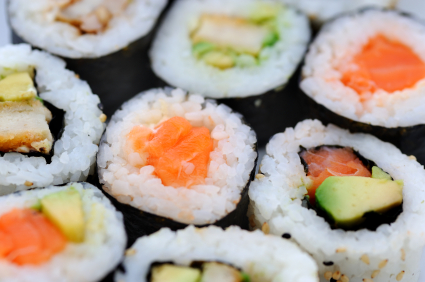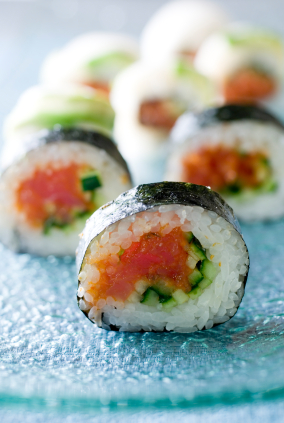Amazingly enough, the tradition of sushi only arrived in America in the early 1950s. However, since the mid-1970s, sushi has undergone a boom period, and there were 3,946 sushi restaurants in the U.S. as of 2014, according to Statistic Brain. With its emphasis on traditional cooking techniques and fresh ingredients, sushi has become equally popular as a career option for graduates of culinary academy.
Does life as a sushi chef – or one day perhaps the proprietor of a fine establishment – sound as appealing as a freshly prepared California roll? Here are four tips to keep in mind as you walk down this exciting culinary path:
1. Understand what sushi really is
For some people, sushi is just another fancy word for raw fish. However, as The Kitchn pointed out, sushi actually means “it’s sour,” referring to the vinegared rice that is combined with various other ingredients. In fact, you can have sushi that doesn’t feature a single slice of fish. It’s important to recognize this as someone who prepares the food, but also so you can illuminate otherwise unknowing customers. You may open their minds to a more nuanced culinary experience.
2. Know your fish options
Though sushi doesn’t have to feature fish, plenty of your customers will want to try something with fresh salmon or eel. As such, a great sushi chef knows the best fish to serve up. The Thrillist spoke with 13 renowned chefs to get their takes on the best and worst fish for sushi.
While the aforementioned salmon is hugely popular, Matt Foreman of Austin’s Uchi said it’s just too bland and unrepresentative of sushi’s real potential. Instead, he said saba, or mackerel, is much more flavorful and aromatic. Eiji Ichimura, head sushi chef at New York’s Brushstroke, offered similar reasons for why he chooses squid, which marries well with rice and vinegar, over the bland striped jack or shimi-aji. Tyson Cole, also of Uchi, thinks more people should avoid the overly tough monkfish and instead try urchin, which has a sweet taste. No matter the choice, all of these chefs arrived at their opinions by experimenting with different fishes and combinations.

As Food Republic recalled, sushi fans across the U.S. are faced with myriad sushi restaurants serving hokey menu items. That includes rolls like the “Crazy Dragon” or “Spicy Mexican,” made with seemingly bizarre or unorthodox items like salsa or smoked meats. However, that’s not what true sushi is all about. Instead, as Thrillist pointed out, it’s focused on well-crafted items and a sense of minimalism. By emphasizing fewer wild and crazy toppings, and instead elements like the flavor and texture of the rice, sushi chefs create food that is truly timeless, without the need for silly gimmicks. Experimenting is fine, but sushi chefs should be more concerned with fish quality over creating, say, sushi rolls with waffle or peanut butter.
4. Make rice the star
As mentioned above, rice is a huge concern for many sushi chefs. It’s the foundation the entire roll is based on, and needs to be treated as such. The Urban Homestead revealed a few important considerations when preparing rice. For one, use short grain rice; because other types have less amylose (or sugar), they won’t prove nearly as sticky. Similarly, don’t add too much sugar to your sushi as this can make it overly sweet. That might explain why most traditional sushi chefs employ only salt and red rice vinegar. Just be aware that you should never wait to add the vinegar after preparing the rice as it won’t absorb the flavors. Finally, all rice should be served at room temperature.




